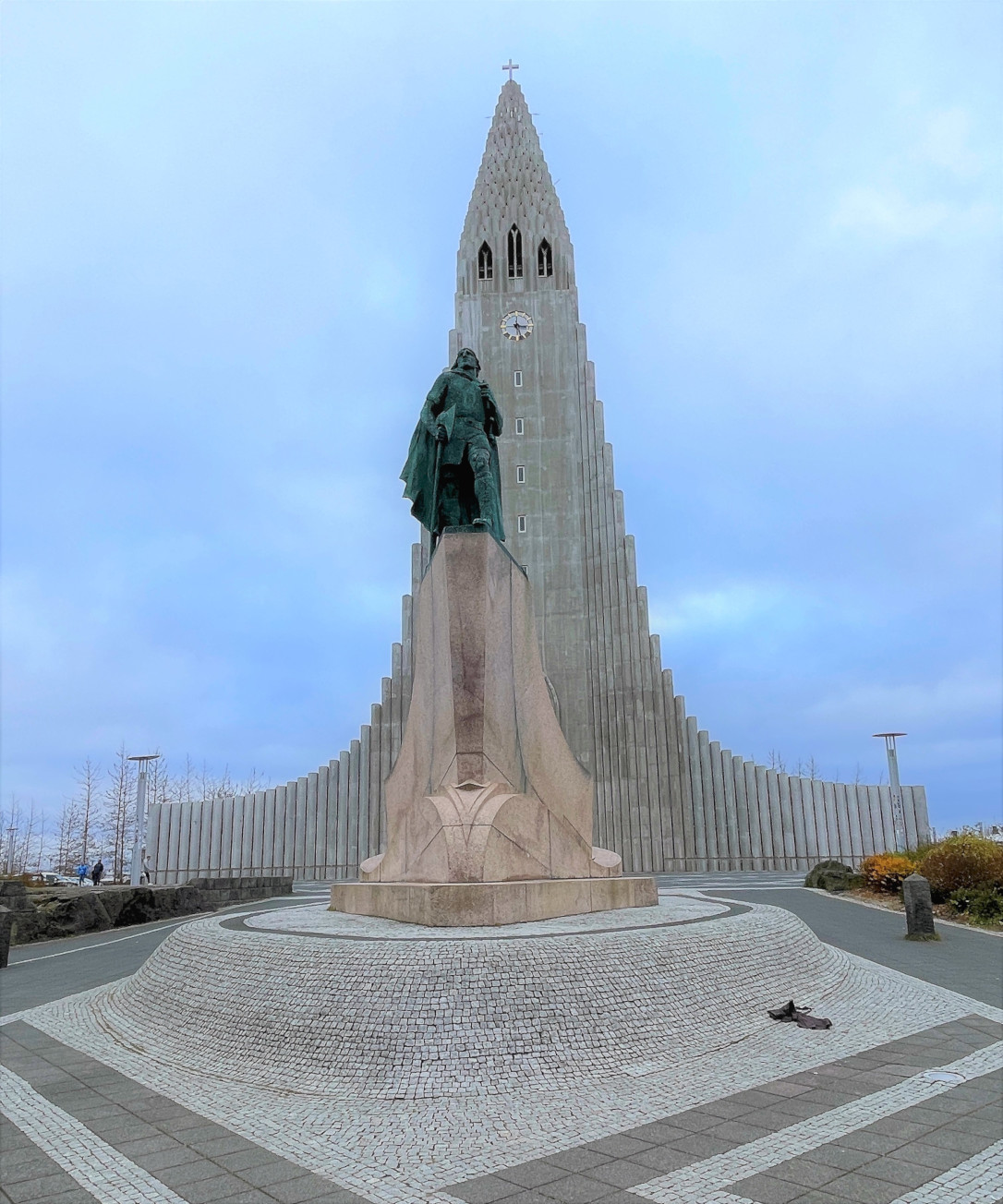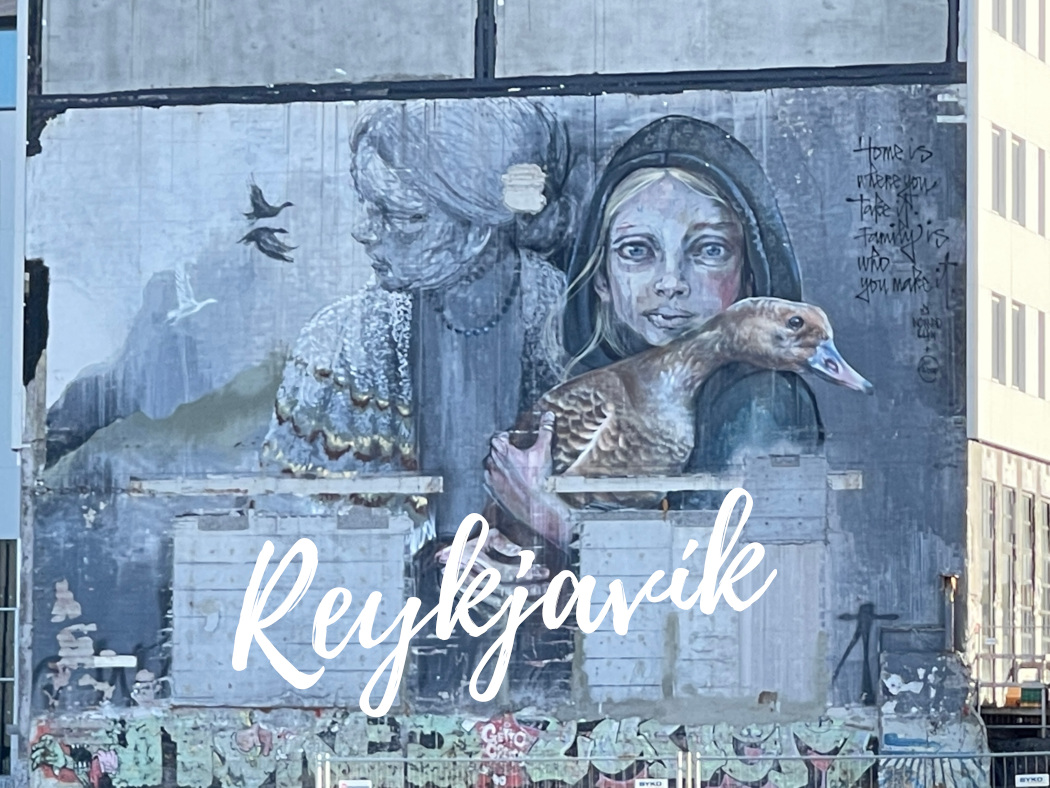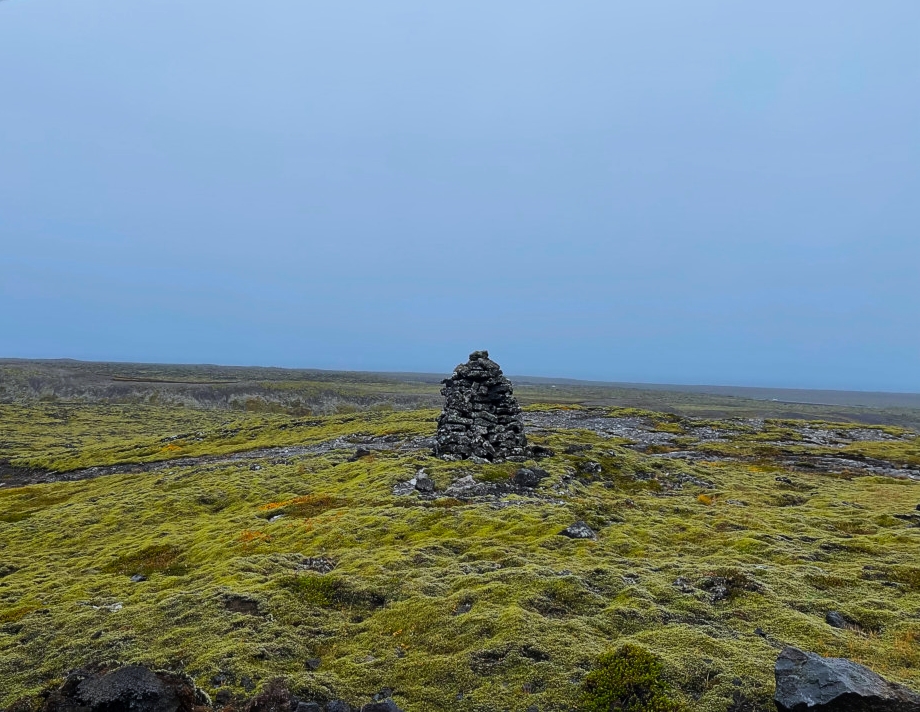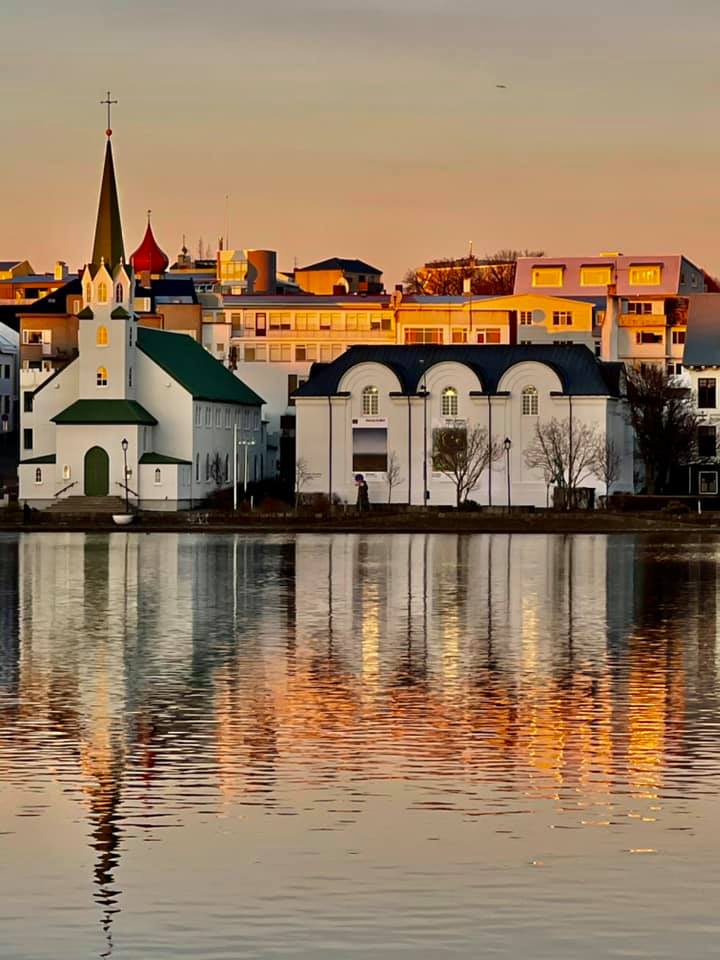Perched atop the tallest hill in Reykjavik, Skólavörðuholt is a place of intrigue and wonder. Steeped in Icelandic folklore, this hill was once believed to be home to a variety of otherworldly beings like hidden people and elves. According to legend, these mystical creatures roamed the hill freely, weaving their magic and sharing their secrets.
But as the population of humans in Reykjavik grew, the hidden people found themselves increasingly squeezed out of their homes on the hill. And so, they retreated further and further into the wilderness, until eventually, they vanished altogether, leaving only their memories and their magic behind.
The magic is still there

Today Skólavörðuholt is a place of wonder and beauty, a beacon for both Icelanders and foreigners alike. The ornate Hallgrimskirkja, with its towering spire, offers breathtaking panoramic views of the city.
As you walk around the hill, you can’t help but feel the presence of those who once called this place home. And as the wind howls and the clouds race across the sky, it’s easy to imagine the hidden people still lurking, watching over the city from their hidden vantage point.
But how did the crowding of the hill first start?
The arrival
The year was 1930, and a flurry of excitement rippled through the streets of Reykjavík. News had spread like wildfire that a group of U.S. representatives had arrived in the harbor, bringing with them a magnificent statue of the legendary explorer, Leifur Eiríksson. The town was in awe as the statue was lifted off the ship, revealing Leifur’s tall figure standing at the edge of his ship. His gaze was fixed on the horizon as if he was still exploring the uncharted waters of the North Atlantic.
The statue was a work of art, crafted by the skilled hands of Stirling Calder. His vision was for Leifur to stand tall at the edge of his ship, gazing out into the endless sea, the wind whipping through his hair. With waves crashing against the base of the statue, it was to symbolize the vast ocean that Leifur had bravely crossed. However, this vision remained unfulfilled as it was placed on dry land, away from the water like Calder had so beautifully imagined.
Yet, even without the water, the statue stood tall and proud, a symbol of the adventurous spirit of the Icelandic people and their ancestors. The people of Reykjavík marveled at the craftsmanship of the statue, and visitors from all over the world came – and still come – to see it, drawn to the story of Leifur Eiríksson and his incredible journey.
The arrival of the Leifur Eiríksson statue brought about mixed emotions among the Reykjavík residents. Some were filled with immense pride to display their Norwegian-born Icelandic hero, while others were skeptical about the statue’s placement on their beloved hill. However, the fact that the Americans had officially acknowledged Leifur as the discoverer of America and his Icelandic heritage was a source of validation for the residents, who saw it as a recognition of their history and culture on the world stage.
Not on top of the hill
In 1930, the U.S. government approached Icelandic officials with a gift to commemorate the 1000-year anniversary of Alþingi as Iceland prepared to celebrate it. The gift was a statue of Leifur (the Lucky) Eiríksson, the Norse explorer believed to have been the first European to set foot in North America. The Americans made only one request – that the statue be placed in a prominent location where it could be seen by all, including ships entering Reykjavík harbor.
The spot the Americans had in mind was the top of the tallest hill in town – a location already steeped in history and meaning for the Icelandic people. The problem was, there was already a structure on that spot – the school cairn – a beloved landmark that held both historical and sentimental value for the residents of Reykjavik. What’s more, plans were already in motion to build a church on the hill, leaving little room for a statue.
There was a contentious question about what to do with the gift. Some argued that the statue should be accepted and placed on the hill, while others vehemently opposed the idea. In the end, they reached a decision – to place the statue at the base of the hill where it could still be seen by those entering the harbor.
The dedication
While for some, the statue was a source of national pride, others saw it as a symbol of Iceland’s deepening ties with the United States. Some have expressed skepticism about the motives behind the statue, viewing it as an attempt to strengthen the U.S.’s political and economic influence in Iceland.
The speech given by U.S. Ambassador Coleman at the unveiling of the statue only served to fuel this skepticism. In his address, the ambassador emphasized the role that America has played in connecting Iceland to the rest of the world through technology and research, and expressed optimism about the future of the relationship between the two countries.
But as with any political statement, there are always those who will view it with suspicion. For some, the statue is a reminder of the need for caution in the face of increasing foreign influence, and a call to preserve Iceland’s national identity and independence. While the speech during the unveiling may have been intended to celebrate the accomplishments of Icelanders, some individuals may have perceived a message that was more geared toward America’s sovereignty.
The school cairn
Skólavarðan, or the school cairn, holds significant cultural and historical value. The cairn or tower was constructed by students as a dedicated space for ceremonies and a general meeting place. It is recognized as one of Reykjavik’s first man-made landmarks.
In 1868, Governor Árni Thorsteinsson commissioned the latest rendition of the tower, which became an important symbol of the city’s history and heritage. The pathway leading up to the tower was named Skólavörðustígur or School Cairn Road, further cementing the tower’s significance in the community.





However, when Iceland’s legislative body, Alþingi, celebrated its 1000-year anniversary, the tower was demolished, marking the end of an era. In its place, the United States government gifted a statue of explorer Leifur Eiríksson, which now stands tall on top of the hill. While the school cairn may be gone, its legacy lives on through the memories of the community and the important role it played in shaping the city’s identity.
Origin of the school cairn
During the time when the school was located in Skálholt, the schoolboys used an old stone guard tower as a cairn to meet up. However, when the school was moved to Reykjavík, the boys wanted to continue their tradition of having a designated meeting place. In 1793, seven years after the school’s relocation, the schoolboys decided to build a new cairn.
They gathered uncut stones and piled them together, creating a makeshift tower that served as a meeting place for the boys. This new cairn was not only a symbol of their dedication to their education and commitment to tradition, but later also became an important part of the community’s cultural heritage.
Sadly, only a few years after the boys built the cairn with their own hands, the school (Hólavallarskóli aka Reykjavíkurskóli) shut down in 1804 and was moved to Bessastaðir. By 1834, the cairn was nothing more than a pile of rocks.

Despite the cairn’s fall from grace, some of Reykjavík’s residents at the time still viewed it as an important monument for the city’s first school and wanted to preserve it. As a result, they decided to rebuild the cairn, but this time they used precut stones instead of uncut ones. The new cairn was a symbol of the community’s commitment to preserving its cultural heritage, and it stood as a testament to the cairn’s historical significance.
However, despite the community’s efforts to preserve the cairn, it still did not receive proper upkeep. As time passed, the structure began to deteriorate once again. By 1858, the cairn had started to fall apart, and it eventually became nothing more than a pile of rocks once again.
A second attempt to restore the tower was made in 1868, but this time it was built stronger with a grand vision in mind. The tower was built sturdy and designed to provide a panoramic view of the city. The renovation of the new tower included a more decorative design and an increase in height. The newly improved tower became an official tourist spot and a point of pride for the residents of Reykjavik.
Rebellion or bad manners?
The statue’s placement caused a lot of upset among the local residents. Some were so unhappy with its presence that they would urinate and spit on it as they walked past. The issue of public urination around the statue was widely discussed, and different solutions were proposed. Some people believed that the problem could be solved by building a public toilet nearby, while others felt that more extreme measures were necessary. One newspaper even suggested that the statue should be connected to an electrical grid so that anyone who tried to urinate on it would receive a small electric shock as a reminder to behave in a more civilized manner.
By 1935, the filth around the statue had become so bad that the city council decided to post a permanent night guard by it to ensure that it would be protected from further vandalism. This guard was in place for the duration of the war and was staffed by American soldiers who were stationed nearby. Despite the backlash from some residents, the statue remained standing and continued to be watched over by American soldiers throughout the war.

The guard stationed near the statue remained in place until the outbreak of the Second World War. At this time, a British army camp was established on the top of Skólavörðuholt, and as a result, the protection of the statue fell under the responsibility of the British military. From that point on, Leifur was effectively safeguarded by the British soldiers stationed at the camp.
It is unclear whether the mistreatment of the Leifur statue was an intentional attack on the tearing down of the previous monument or simply the behavior of a few disrespectful individuals. Interestingly, the nearby Einar Jónsson Museum, which is located across the street from the statue, also experienced similar vandalism, suggesting that the issue may have been more related to individual behavior rather than a targeted attack. Without further evidence, it is difficult to determine the exact motivation behind the mistreatment of the statue, but it is clear that its presence was a source of controversy and upset some members of the community.

The public urination didn’t stop until the construction workers building Hallgrímskirkja found this behavior completely uncalled for and wouldn’t allow it while they were building the church.

It is quite common in Reykjavík that during its evolution, streets, and neighborhoods would change names to accommodate the new change. The hill had been named after the school cairn, the people´s pride and joy, but the name remained unchanged even after it was torn down and replaced with the statue. Not even the church, Hallgrímskirkja, changed the name of the hill. Today, a monument in remembrance of the cairn can be seen near the statue. Perhaps this reflects back to how deeply valued the cairn, or tower, was to the people.











